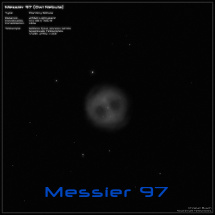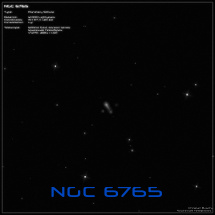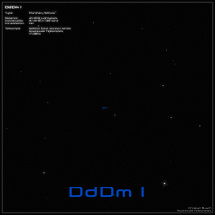
A planetary nebula (PN) is the ejected shell of a star at the end of its life. The name goes back to Friedrich Wilhelm Herschel, who discovered a large number
of these nebulae and named them after the appearance of Uranus in his telescope.
When a star ages, the hydrogen in its centre is eventually used up. From that point on, helium is fused into oxygen and carbon. The rate at which fusion occurs
is proportional to the 30th power of the temperature. If it increases only slightly, the energy output of the star increases very dramatically. This results in pulsations
of the star, which can be so violent that the stellar envelope is ejected into space. In this way, the star not only loses more and more mass, but the hot core is also
gradually exposed. As soon as the outer layers have reached a temperature of more than 30,000 Kelvin, enough high-energy UV photons are generated that can
ionise the ejected envelope and thus excite it to glow.
The PN's envelope expands into space at a speed of 20-40 kilometres per second and is heated up to 10,000 Kelvin by the star's radiation. It consists of 70% hydrogen,
28% helium and 2% other elements. The density is 1,000 to 100,000 particles per cubic centimetre. That sounds like a lot, but it is still significantly less than in an
ultra-high vacuum created on Earth. After about 10,000 years, the planetary nebula fades.
The star at the centre of the PN becomes a white dwarf as it loses its envelope. With a diameter of 10,000 to 30,000 kilometres, it is quite small, but with
temperatures of up to 200,000 Kelvin, it is also extremely hot. The higher the temperature, the greater the luminosity. At T= 50,000K, the white dwarf reaches
approximately the luminosity of our sun. Around 90% of all white dwarfs weigh between 0.5 and 0.7 solar masses - despite the very different initial masses
of the progenitor stars. The density is around one tonne per cubic centimetre. Most white dwarfs consist for the most part of carbon and oxygen with a thin
atmosphere of helium and hydrogen.








































